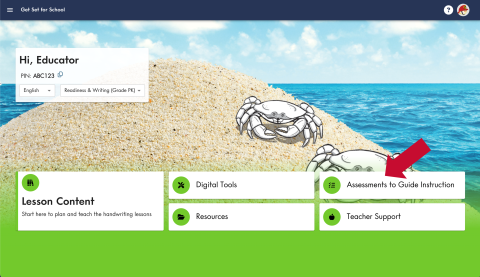Insider Tips
Using the Readiness and Writing Assessment to Measure and Guide Pre-K Growth
September 8, 2025
by: Tania Ferrandino
2 mins
The purpose of Pre-K assessments is not only to gain an understanding of how well your students have grasped the material that you have taught, but to determine whether you should alter instruction methods or lessons for the coming months.
Readiness & Writing includes assessments to use based on what works best in your classroom and for your learners. These assessments will give you a picture of your students as learners three times a year, to provide a snapshot of a student’s behaviors, skills, and strategies at a single point in time.
Unlike the assessments taken by students at higher grade levels, Pre-K assessments are informal and should only take 10-15 minutes and use language and formats that young students can understand. You should also be able to take the information you learn about your students and communicate results with families.
Where to Begin: Assessments to Guide Instruction
The Readiness and Writing assessment resources can be found on the Interactive Digital Teaching Tool, under Assessments to Guide Instruction.

Here, you’ll access educator packets, detailed directions, and the following types of assessments:
- Benchmark Assessment – Administered at the beginning, middle, and end of the school year, this assessment will capture a snapshot of student’s readiness and writing skills.
- Classroom Observation Checklist – Use this tool on a weekly basis or at regular intervals to help monitor how a student is progressing toward achievement of specific skills.
Getting Started with Pre-K Assessments
To ensure both you and your students get the most out of the assessment process, follow these simple steps:
- Navigate to Assessments to Guide Instruction in your Interactive Digital Teaching Tool. Review the educator packet for step-by-step instructions on when and how to use.
- Set up your class roster in + Live Insights to organize student data in one convenient place.
- Print documents or use digital tools to administer the assessments. For extra guidance, watch our free Pre-K Assessments webinar for tips and best practices.
Log data directly via the Assessments to Guide Instruction (AGI) or on the printable version. There is a consistent scoring system:
Image Image
Image
- Share progress with families. Keeping families informed fosters strong school-to-home connections and ensures everyone is working together to support each child’s growth.
Setting Students Up for Kindergarten Readiness
By thoughtfully using these assessments, you’ll have a clearer picture of each child’s developmental progress, which helps you tailor instruction to their needs. More importantly, you’ll be giving your students a strong foundation of fun, purposeful learning that sets them up for success in kindergarten and beyond.